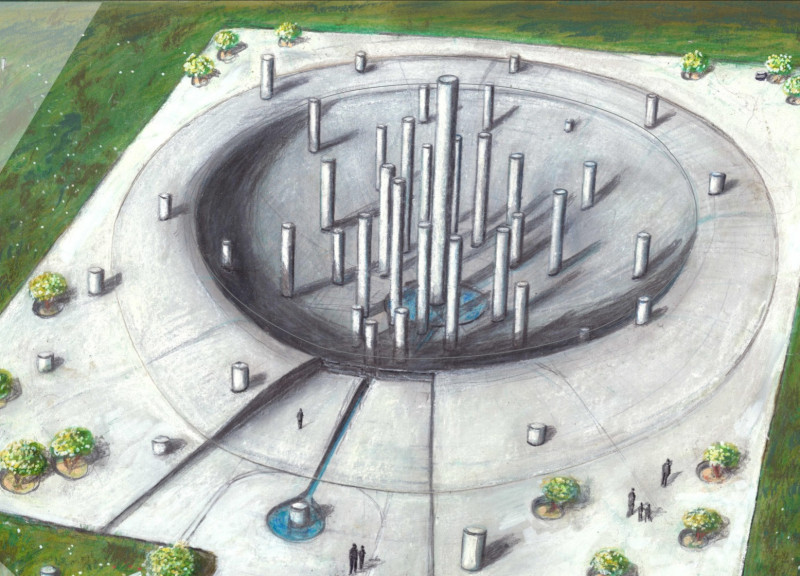5 key facts about this project
The project represents a multi-use space that accommodates both residential and community functions, generating an inclusive atmosphere that fosters interaction and engagement. By incorporating public areas within its framework, the design encourages social connectivity, making it a pivotal location for community activities. This dual-purpose strategy not only enhances the usability of the space but also aligns with contemporary urban planning philosophies that prioritize mixed-use developments.
The layout of the project showcases an efficient spatial organization, utilizing innovative zoning strategies to distinguish between private and communal areas effectively. Common spaces are strategically positioned to serve as gathering points, promoting a sense of community while complementing the more intimate residential zones. The seamless integration of indoor and outdoor spaces introduces natural light and ventilation, enhancing the overall livability of the environment.
Materials play a crucial role in conveying the design’s ethos and practicality. The project employs a combination of sustainable and locally sourced materials, which underscore an environmental consciousness while also celebrating the local context. Key materials used include sustainably harvested timber for structural elements, recycled concrete for foundations and walls, and glass facades that promote transparency and interaction with the surroundings. This careful selection of materials not only ensures durability but also reflects a commitment to reducing the carbon footprint of the building.
A unique aspect of the design is its approach to sustainability, which goes beyond mere adherence to energy efficiency standards. The incorporation of green roofs and walls serves both functional and aesthetic purposes, enhancing biodiversity while creating visually appealing micro-ecosystems that contribute to urban greening. Furthermore, the project integrates systems for rainwater harvesting and solar energy generation, demonstrating an innovative commitment to environmental stewardship.
The architectural design also synthesizes advanced technological solutions, incorporating smart building systems that optimize energy use and enhance user comfort. These installations include automated shading systems that adjust according to sunlight patterns, smart thermostats that learn user preferences, and efficient lighting systems that reduce energy consumption during low-usage hours. This blend of technology and architecture reflects a forward-thinking approach that prioritizes user experience while minimizing environmental impact.
In considering the surrounding geographical context, the design interprets the local climate and topography, responding to environmental challenges with bioclimatic strategies. The orientation of the building maximizes natural light and minimizes heat loss, adapting to seasonal variations and promoting energy efficiency year-round. The project not only accommodates the immediate needs of its users but also respectfully engages with its environment, creating a micro-climate that facilitates comfort and wellbeing.
Throughout the design process, various architectural ideas have been explored to address the evolving dynamics of urban living. The incorporation of flexible spaces that can be reconfigured based on user needs signifies an adaptive approach to future demands. These design philosophies resonate with broader architectural trends that seek to anticipate changing lifestyles, ensuring long-term relevance and functionality.
In summation, this architectural project stands as a testament to the thoughtful integration of design, materiality, and context. By prioritizing sustainability, functionality, and community engagement, it creates a vibrant addition to the urban fabric. The seamless fusion of indoor and outdoor environments, along with innovative uses of sustainable materials and cutting-edge technology, communicates a clear vision of modern living that is both practical and inspiring. For those interested in further examining this project, additional details can be found in the presentation, including architectural plans, sections, and insights into the underlying architectural ideas that drove its conception. Explore the project presentation to gain a deeper understanding of its design intricacies and the architectural vision it embodies.


 Raven Lamoot
Raven Lamoot 




















